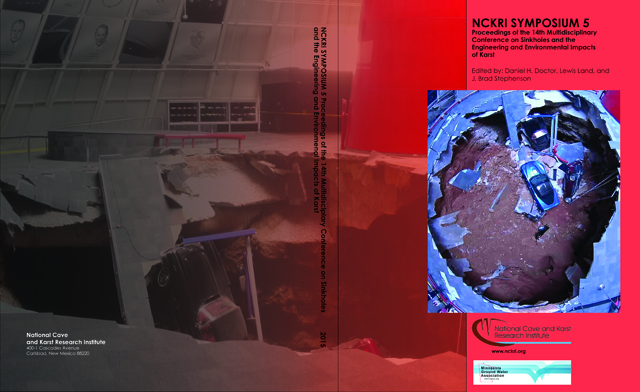Abstract
Florida is one of the most susceptible states for sinkhole collapses due to its karst geology. In Florida, sinkholes are mainly classified as cover subsidence sinkholes that result in a gradual collapse with possible surface signs, and cover collapse sinkholes, which collapse in a sudden and often catastrophic manner. The future development of a reliable sinkhole prediction system will have the potential to minimize the risk to life, and reduce delays in construction due to the need for post-collapse remediation. In this study, different versions of small-scale sinkhole physical models experimentally used to monitor the water levels in a network of wells. This information is then used in a spatial-temporal analysis model to study the behavior of the system until the sinkhole collapses. The ultimate goal is to use this process in a reverse manner to monitor an existing network of installed groundwater wells to study the fluctuations in the water levels and use the spatial-temporal analysis to predict potential sinkhole collapses. The groundwater levels are monitored using sensors that are hooked up to a high-resolution data acquisition system. The results of a series of tests conducted using this sinkhole physical model showed that there is a very distinguishable groundwater cone of depression that forms underground before the sinkhole collapses. This cone of depression was studied in its early stages and as it progressed with time. This analysis is used to then investigate the growth of the sinkhole before the surface eventually collapses. The spatial-temporal model showed the development of the groundwater cone of depression with time during the development of the cavities within the sediments can be used as a potential ‘signal’ to identify and isolate the sinkhole location.
DOI
http://dx.doi.org/10.5038/9780991000951.1039
Included in
Sinkhole Physical Models to Simulate and Investigate Sinkhole Collapses
Florida is one of the most susceptible states for sinkhole collapses due to its karst geology. In Florida, sinkholes are mainly classified as cover subsidence sinkholes that result in a gradual collapse with possible surface signs, and cover collapse sinkholes, which collapse in a sudden and often catastrophic manner. The future development of a reliable sinkhole prediction system will have the potential to minimize the risk to life, and reduce delays in construction due to the need for post-collapse remediation. In this study, different versions of small-scale sinkhole physical models experimentally used to monitor the water levels in a network of wells. This information is then used in a spatial-temporal analysis model to study the behavior of the system until the sinkhole collapses. The ultimate goal is to use this process in a reverse manner to monitor an existing network of installed groundwater wells to study the fluctuations in the water levels and use the spatial-temporal analysis to predict potential sinkhole collapses. The groundwater levels are monitored using sensors that are hooked up to a high-resolution data acquisition system. The results of a series of tests conducted using this sinkhole physical model showed that there is a very distinguishable groundwater cone of depression that forms underground before the sinkhole collapses. This cone of depression was studied in its early stages and as it progressed with time. This analysis is used to then investigate the growth of the sinkhole before the surface eventually collapses. The spatial-temporal model showed the development of the groundwater cone of depression with time during the development of the cavities within the sediments can be used as a potential ‘signal’ to identify and isolate the sinkhole location.

